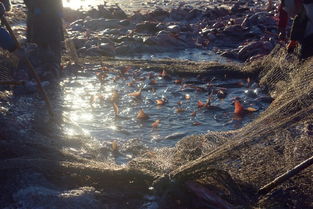Opening Fish Holes: A Comprehensive Video Guide to Enhance Your Fishing Skills
Fishing, an ancient pastime that continues to captivate enthusiasts around the world, often requires a blend of patience, skill, and a deep understanding of the aquatic environment. One such skill that can significantly enhance your fishing experience is the art of opening fish holes. These strategic spots in the water can serve as prime locations for attracting fish, increasing your chances of a successful catch. In this article, we delve into the essential techniques for creating effective fish holes, complemented by a detailed video guide to help you master this skill.
Understanding the Importance of Fish Holes
Fish holes are shallow depressions in the water that can provide a haven for fish. They offer a resting place, protection from predators, and a concentration of food sources. By strategically opening fish holes, you can create an artificial habitat that mimics these natural spots, thereby attracting fish to your chosen location.
Selecting the Right Location
The first step in opening a fish hole is to select the right location. Look for areas with natural features that suggest fish might congregate, such as:
- Areas with abundant vegetation, which can provide cover for fish.
- Steep banks that can create a current or attract food particles.
- Areas where you've previously caught fish, indicating a pattern in their behavior.
Tools and Materials Needed
To open a fish hole, you'll need a few essential tools and materials:
- A spade or digging tool: To dig the hole.
- Bait: To attract fish to the area.
- A net or stringer: To help you catch the fish once they are attracted.
The Step-by-Step Guide
Step 1: Mark the Location Begin by marking the area where you want to open the fish hole. This helps ensure you're targeting the right spot and reduces the risk of digression.
Step 2: Digging the Hole Using your spade, start digging a hole. The size of the hole depends on the species of fish you're targeting. For larger fish, you'll need a deeper and wider hole. Aim for a depth of about 1 to 2 feet and a diameter of 3 to 4 feet.
Step 3: Shaping the Hole Once the hole is dug, shape it to mimic a natural fish hole. The sides should be steep and the bottom should be flat, providing a stable base for fish to rest on.
Step 4: Adding Bait Next, add bait to the hole. This can be anything from corn to worms, depending on the species you're targeting. The bait should be placed at the bottom of the hole to attract fish.
Step 5: Maintaining the Hole After you've opened the fish hole, it's important to maintain it. Regularly check on the hole to ensure it's still attracting fish and make adjustments as needed.
Video Guide

To help you visualize and understand the process better, we've compiled a comprehensive video guide. This video walks you through each step, from selecting the location to maintaining the fish hole, providing a clear and detailed demonstration of the technique.
Conclusion
Opening fish holes can be a game-changer for your fishing experience. By strategically creating these artificial habitats, you can increase your chances of attracting and catching fish. Remember, the key to success lies in understanding the natural behavior of fish and using the right techniques to create an inviting environment. With practice and the guidance provided by our video guide, you'll be well on your way to becoming a master fish hole opener. Happy fishing!












